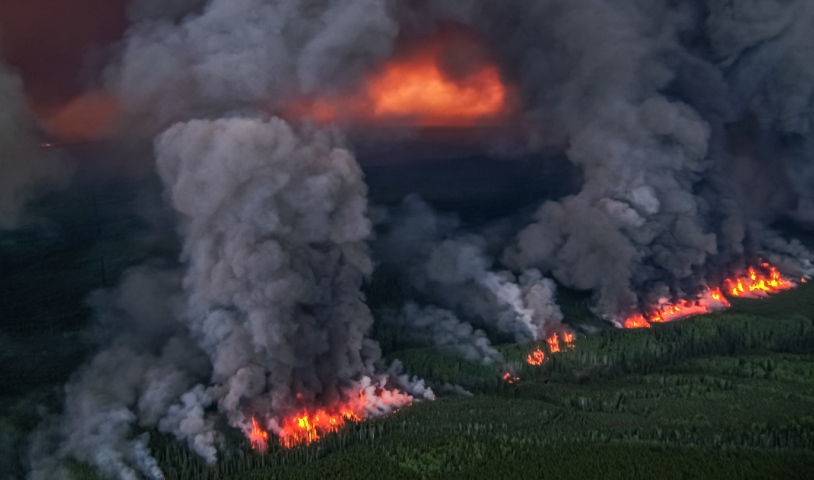One project, one review — one controversy
Friday, May 11, 2012
Federal commitment to streamline the environmental review process gets mixed reviews
Federal commitments to streamline environmental reviews of major resource projects sit well with the mining industry, but not so well with environmentalists, scientists and many other notable Canadians.
Miners have been a leading voice in calling on the Harper Conservatives to amend the review process to remove what they believe are needless delays in getting projects vetted by federal regulators. They want duplication of paperwork eliminated, and they want Ottawa to commit its bureaucracy to fixed time limits for reviewing projects and rendering a verdict. That could mean faster turnaround times on projects that typically take a decade to develop from early drilling investigations to operating mines.
When Natural Resources Minister Joe Oliver announced in mid-April what the Tories are calling the Responsible Resource Development initiative, representatives of mineral explorers and mine operators applauded.
The world relies on mining to supply everything from gravel for roads, sidewalks and building foundations to coal for steelmaking, copper for electronic devices, gold for jewelry. In Canada, mining accounts for 10 per cent of the economy and 40 per cent of exports – and British Columbia is a major player in that enterprise.
But the Tories’ approach — inspired in large part by similar initiatives in British Columbia since the B.C. Liberal Party took power in 2001 — has alarmed many.
Notably, two former federal fisheries ministers from British Columbia, Progressive Conservatives Tom Siddon and John Fraser, described the Tories’ plan to water down habitat protection legislation as either inexcusable or foolish.
B.C. Environment Minister Terry Lake, meanwhile, applauded the changes and said the province will look at legislative changes to match those emerging from Ottawa.
Gwen Barlee, policy director of the Wilderness Committee, noted the province has been more aggressive about supporting resource projects than have the feds. B.C. approved Taseko Mining’s Prosperity copper-gold mine near Williams Lake before its rejection in 2010 by regulators in Ottawa. (The project has been revised and is now undergoing a second federal review.)
“Gradually over the years we have incorporated environmental laws and standards to make sure we can deal with acid rock drainage, or prevent it from happening in the first place, so that we aren’t having groundwater contamination, or damage to fish streams,” Barlee said. “Around the world, other jurisdictions are improving environmental laws. In Canada, we are rolling back environmental laws by 10, 20, 30 years. It makes me shake my head. “I think the government has taken a misstep, particularly the federal government when it comes to how strongly British Columbians feel about protecting fish, whether it’s wild salmon or cutthroat trout or runs of steelhead. I don’t think British Columbians are going to sit back and get out of the business of environmental management and turn it over to corporations.”
Karina Brino, president and CEO of the Mining Association of British Columbia, believes the changes amount to less than what opponents fear.
“We as an industry absolutely have a social responsibility in the communities where we are operating,” Brino said. That responsibility includes environmental safeguards and ensuring new mines are catalysts for community growth, not disruption.
The industry also believes its contribution to modern life is too easily overlooked amid the discussion about the merits of a proposed new mine and its environmental impact, its capacity for job creation, royalties it will pay to the provincial treasury, and the value of metals and minerals as global commodities.
Canada, for example, is the world’s second largest exporter of steelmaking or metallurgical coal and 66 per cent of the product comes from mines in southeast and northeast B.C. The product is shipped to steelmakers in Asia and Europe and finds its way back here in automobiles, industrial equipment, even kitchen utensils.
Seven mines scattered around B.C. account for 40 per cent of Canada’s annual output of copper, a soft metal used for plumbing, motors, batteries, wiring and electronic devices. Fifty per cent of Canadian silver production comes from B.C.; it’s used in electronics, batteries, automobiles and medicine. Other prominent metals in B.C. include gold, which is used either in jewelry or as a store of wealth in lieu of currency; lead, which is used in batteries, electronics sheathing and corrosion resistance applications; molybdenum, which is used primarily as an alloy in steelmaking; and zinc, which is used in brass, steel plating and other industrial applications, as well as in products ranging from deodorant to nutritional supplements.
“It’s very easy to talk about mining in terms of facts and figures, but that doesn’t mean a lot to the person walking down the street,” Brino said. “When people think about mining they think about the hole in the ground and the stuff in the water. “They don’t think about their bikes or cars, about all of the medical equipment that’s available because of mining. We all want to be green, we all want to drive hybrid cars and we all want to be responsible for less emissions. “But for all of that to operate, you need steel, you need raw materials that come from the ground.”
Brino said new B.C. mines will get developed, responsibly, in a tighter time frame as a result of the federal changes. The mining industry isn’t looking to gut the environmental review process, she said. Rather, they’re looking for a process akin to B.C.’s environmental assessment agency.
The province imposes a limit on the amount of time a project can be in the hands of its staff, but routinely interrupts that process if it determines the proponent needs to conduct more research. If proponents want a speedy deliberation, the onus is on them to make sure they’ve got all the required information before entering the process in the first place.
“When people think of ‘faster’ they think of speeding something through. What we are talking about is clear timelines. When a project is deemed to be reviewable — meaning that when all of the information that’s required for the review has been submitted — it shouldn’t take 10 years for a decision to be made,” Brino said. “There is going to be an obligation on the side of the proponents, on the industry, on our side, to be very clear about the scope of the review, about the type of information that’s required from that level of assessment, and being ready with the information, with the tools, with the data, with the impacts, with the research, with the studies — so that when the review starts, when the clock starts to tick and we’re all in there participating in the review process, we all understand when we are going to come out at the other end.
“If we are serious about taking advantage of the opportunity of supporting resource development where all of the requirements have been met, then it should be a priority.”





